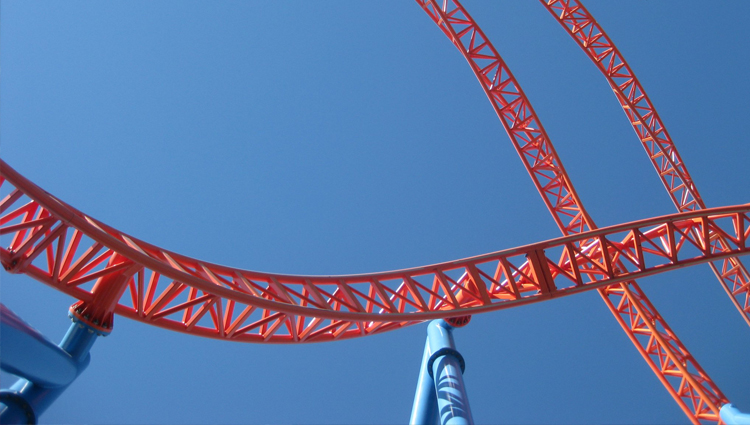On Paper, the World's Smoothest Roller Coaster Ride

Image credits: Son via Wikimedia Commons
(Inside Science) -- At the age of 74, retired roller coaster designer Werner Stengel still spends his days riding the latest loop-de-loops.
"Trying to explain the thrill of a roller coaster to someone who has never ridden one is like trying to explain color to a blind person -- you just have to experience it for yourself," said Stengel, who in 1975 created the first modern roller coaster loop, built for Six Flags' Magic Mountain in California.
But for summer vacationers who are tired of having their heads jerked around by the laws of physics, Swedish mathematicians have published new designs for what could be the smoothest, most comfortable way to flip head over feet.
Using the same equations that describe how the planets orbit the sun, Hanno Essén of Sweden's Royal Institute of Technology in Stockholm drew a series of potential roller coaster loops that have one thing in common -- the force that riders would feel pushing their stomachs down into their seats stays exactly the same all the way around the loop.
Riders would get the visual experience of a loop without any whiplash.
"If you were in a car without windows and the track were perfectly smooth, you would not know that you were in a roller coaster," said Essén. "You'd just be pressed to the seat by a constant force."
This force, the centripetal force, is the same one that prevents water from falling out of a bucket swung upside-down on a string. The shape of a loop determines how much of it we feel at different spots on the loop.
Early roller coaster loops -- including the first one, a 13-footer built in 1846 in Paris -- were simple circles. To make it all the way around without being pulled off at the top by gravity, coaster cars hit the circle hard and fast, shoving riders' heads into their chests as they changed direction with a sudden snap that occasionally broke their collarbones.
In the 1970s, Stengel talked to NASA to figure out how much force rider could safely tolerate. He created the modern standard: 6 G's, which makes a rider feel six times heavier than normal.
To improve safety, Stengel ditched the circle. He designed a new loop that pinched at the top, a shape borrowed from exit ramps on German highways. This clothoid curve -- which tapers from a gentler arc at the bottom to a tight curve at the top -- is standard in today's amusement parks, where loops are now up to 200 feet tall. It eases riders into a loop with a force of 3-4 G's at the bottom that gradually lessens on the side of the loop to, often, a feeling of weightlessness at the top.
The new Swedish design, which to the naked eye looks similar to a clothoid loop, would in theory smooth out these changes in force into one constant force, said Stengel. But he doubted that it could achieve this uniformity if actually built.
That's because roller coasters aren't as simple as a dot moving around a curve. They jostle on imperfect tracks and are slowed down by friction and wind resistance.
Even if the force could be kept constant, the riding experience would depend on where you sit. Passengers in the front and end cars feel greater G forces than those the middle cars at the coaster's center of gravity.
Different parts of a rider's body would also feel different forces, according to Ann-Marie Pendrill, who studies roller coasters at the University of Gothenburg in Sweden.
"Your head would feel a little lighter than your bottom," she said, explaining that the head is closer to the center of the loop, where the centripetal force is smaller.
For now, the new design will remain an academic exercise -- which, to veteran thrill seeker Stengel, is just as well.
"It sounds a bit boring to ride," he said. "Part of the fun of a roller coaster is being pushed around with changing forces."

